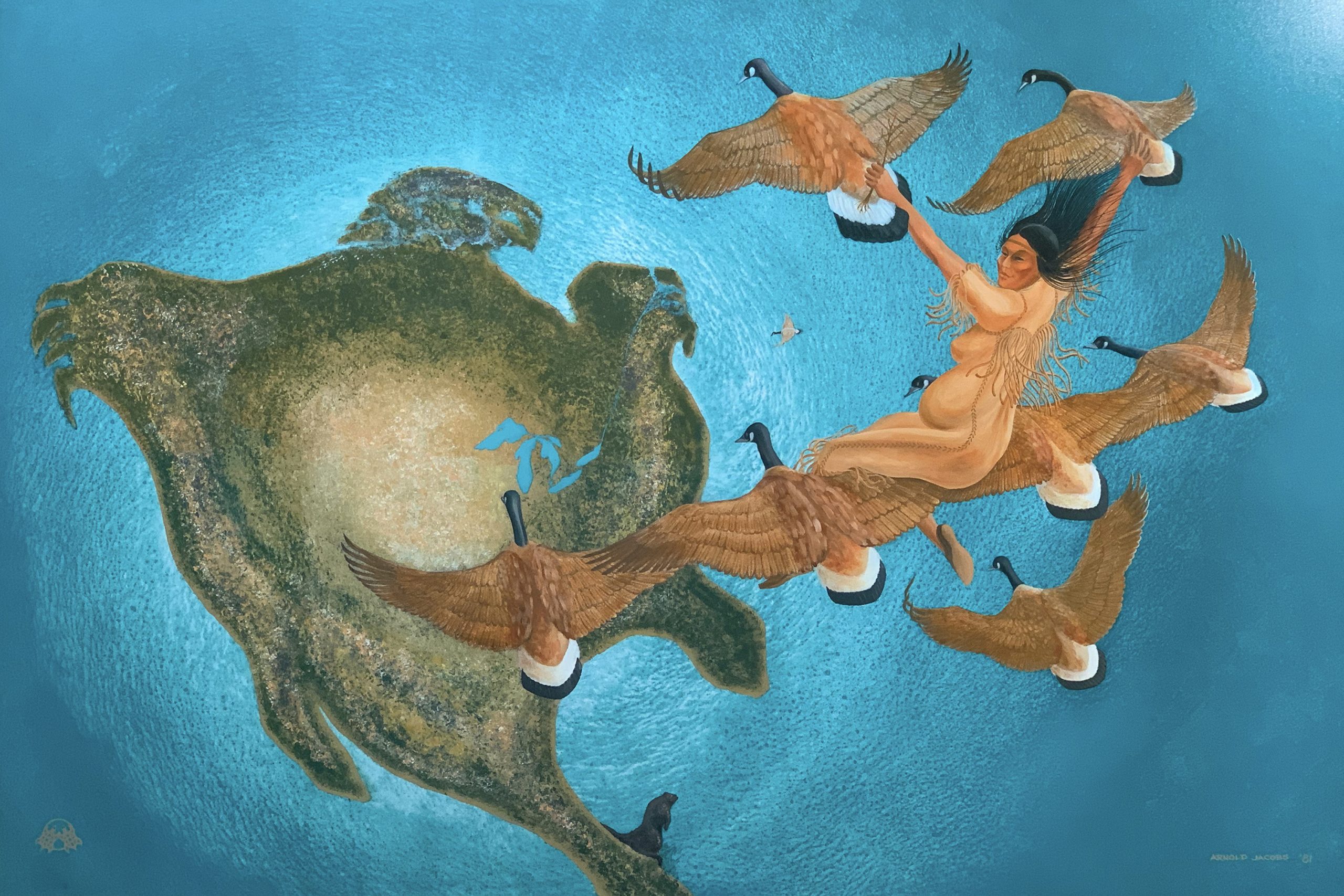
telling their own stories
Haudenosaunee say the New York State Museum misrepresents them and their history. The Skä•noñh Great Law of Peace Cultural Center tells a different story.

isitors to the New York State Museum walk through rooms to the sounds of birds and bugs. In its First Peoples exit, the museum features dioramas of mostly naked human figures tilling fields, with little evidence of the culture and agricultural sophistication the Haudenosaunee possessed before Europeans invaded North America. The exhibit also features artifacts taken from Haudenosaunee sites, with the exhibit often mislabeling the Haudenosaunee as the Iroquois, a French word that Haudenosaunee tribes like the Onondaga do not recognize.
Syracuse University art history associate professor Sascha Scott said that dioramas make the portrayed in them look more primitive than they were..
“Dioramas are really a touchy subject. When they have this static, stereotype of Native people in the past, it exoticizes them,” Scott said. “It’s part of the colonial legacy of museums.”
Scott Stevens, an associate professor of Native American studies at SU, said that museums reinforce negative stereotypes that Indigenous people have been trying to get rid of for years.
“You’d go from looking at mastodons and saber-tooth tigers to Native Americans,” Stevens said. “That transition wasn’t a subtle one. If you’re a little kid, you just think ‘Okay, dinosaurs here, mastodons here, Indians. All these things must be extinct.’”
Despite what the museum may make you think, Stevens and other Haudenosaunee make it clear their people are very much not extinct.
Haudenosaunee is the word for the indigenous nation that has lived in New York and Canada for hundreds of years and continues to this day. It is made up of the Onondaga, Cayuga, Seneca, Oneida, Mohawk, and Tuscarora tribes.
In contrast to the state museum, the Skä•noñh Great Law of Peace Center sits on the banks of Onondaga Lake, where the Haudenosaunee came together in peace in the 12th Century.
The center functions differently than a museum, and Tina Thomas, an education associate at the Skä•noñh Center, made it clear that it is not a museum. “We are giving everyone a background on the Haudenosaunee people,” she said.
The center focuses on Haudenosaunee traditions, beliefs, and practices. It starts with an exploration of the Onondaga language, its near extinction, and efforts to revive it. “Then working your way upstairs and going a little more in-depth in the Great Law of Peace, and the time of contact” when Europeans arrived in central New York.
All objects in the Skä•noñh Center were made by an Onondagan for the purpose of the center. The Onondaga prefer that artifacts remain undisturbed rather than be removed from context and placed in a museum.
A cultural center also sets itself apart from a museum by being curated by the community. Thomas said that having a cultural center gives anyone in the area a better chance to learn about the Haudenosaunee than getting second-hand information from someplace that is not run by Native Americans.
“I think that’s a bigger deal when kids or adults come through here learning the solid truth and not stories they were told in classrooms,” she said.
The state museum declined an interview but said in a statement that they have been talking to the Haudenosaunee about their exhibits and may change them in the future.
There’s a long history of distrust between the Haudenosaunee and the state deeply rooted in disputes over land and treaties.
A more collaborative approach from the state museum, Stevens said, would be a welcome step in the right direction. But he would like to take it a step further and set a rule that might prevent museums from spreading misinformation.
“Native American museums should be run by Native Americans.”
